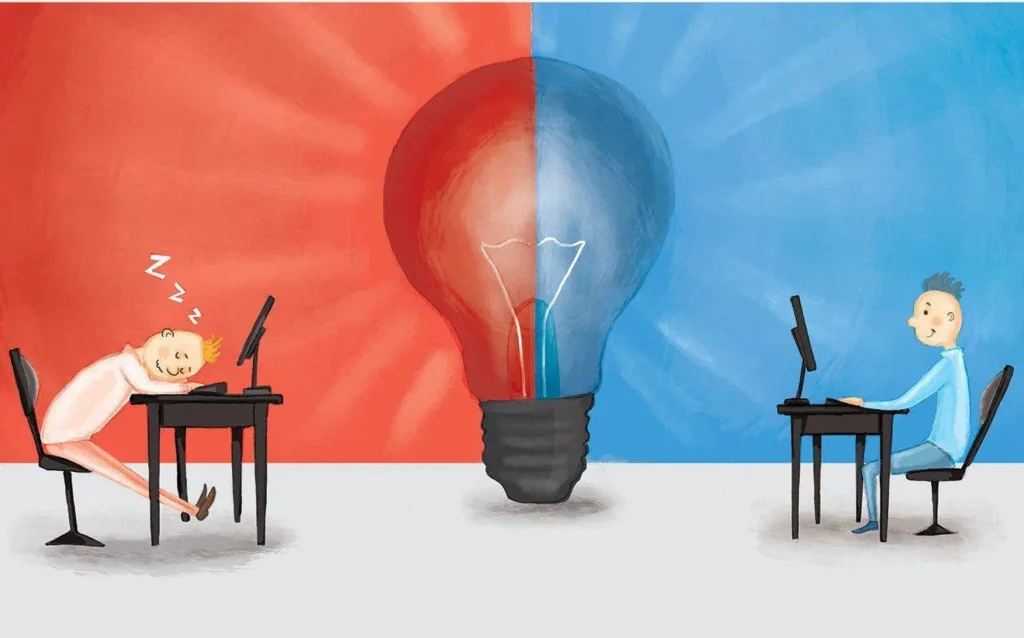Proper lighting is essential for maintaining eye health and enhancing productivity in both home and office environments. Poor lighting can lead to eye strain, headaches, and decreased focus, while well-designed lighting improves comfort and efficiency.

Light Intensity and Positioning
The brightness and placement of light sources significantly affect visual comfort. Insufficient lighting forces the eyes to work harder, causing fatigue and discomfort. Conversely, overly bright or improperly positioned lights can create glare, leading to eye strain and reduced productivity. In office settings, it’s recommended to have light levels between 300 to 500 lux for tasks like reading and writing. Proper positioning of light fixtures, such as placing them to the side of workstations, can minimize shadows and glare, enhancing visual comfort.
Glare and Photophobia
Glare occurs when excessive brightness causes visual discomfort, often leading to photophobia—a heightened sensitivity to light. This condition can result in squinting, eye pain, and headaches, particularly in environments with intense or flickering lights. To mitigate glare, using diffusers, adjusting the angle of light sources, and incorporating window treatments can help create a more comfortable lighting environment.
Blue Light Exposure
Blue light, emitted by digital screens and LED lighting, has both benefits and drawbacks. During the day, blue light can enhance alertness and cognitive function. However, excessive exposure, especially in the evening, can disrupt circadian rhythms and impair sleep quality. Prolonged exposure to blue light may also contribute to digital eye strain, characterized by dry eyes, blurred vision, and headaches. Implementing blue light filters, reducing screen time before bed, and using warmer lighting in the evening can help mitigate these effects.
Impact on Productivity
Lighting quality directly influences work performance. Poor lighting conditions can lead to increased errors, reduced concentration, and higher levels of fatigue. In contrast, well-lit environments enhance mood, energy levels, and overall productivity. Incorporating natural light, when possible, and using adjustable lighting solutions can create a more dynamic and comfortable workspace.
In Conclusion:
thoughtful lighting design—considering intensity, positioning, glare reduction, and blue light exposure—is crucial for eye health and optimal productivity. By addressing these factors, both home and office environments can be transformed into spaces that support well-being and efficiency.



